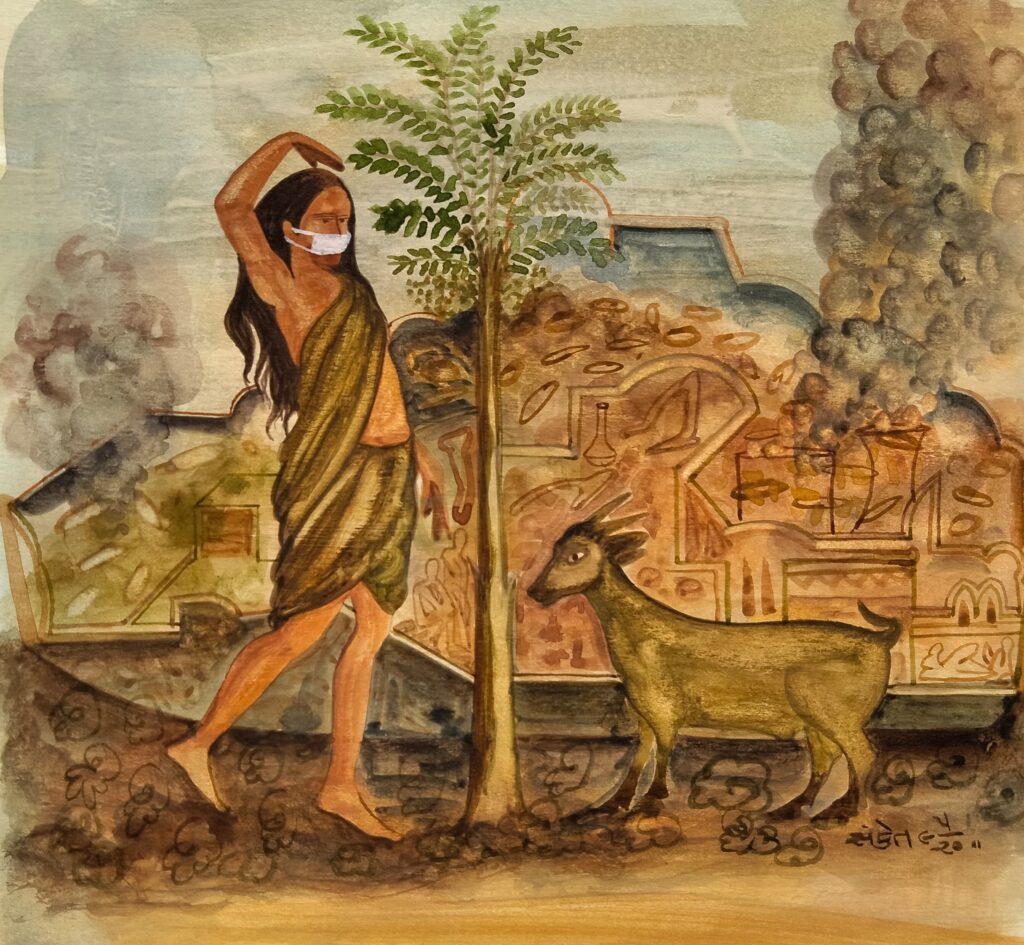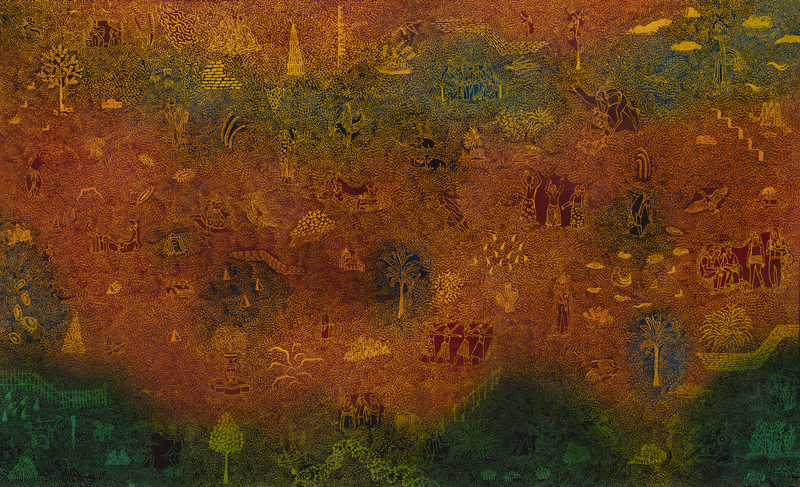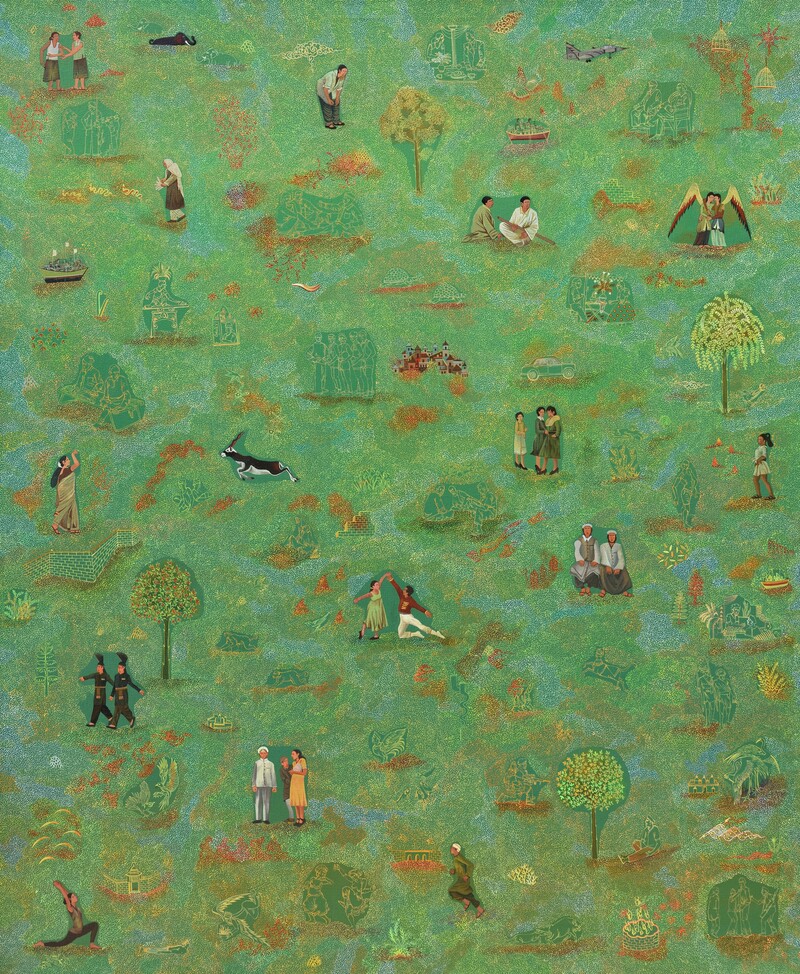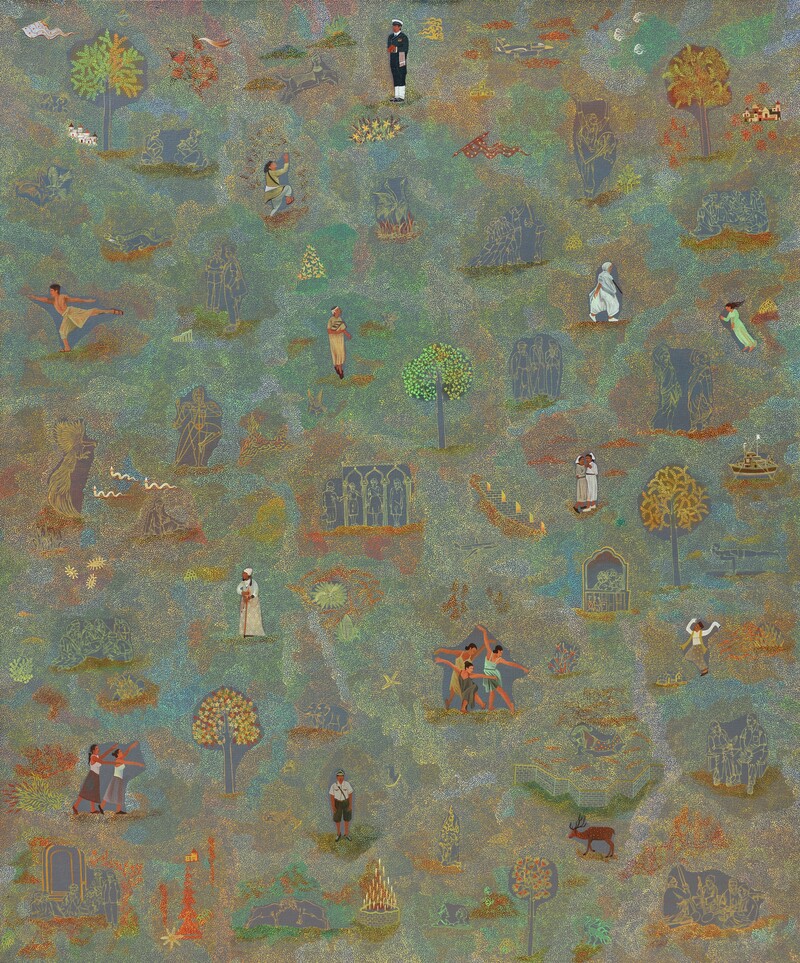Sanket Viramgami
(b. 1988)
Sanket Viramgami’s works are imbued with a romantic eclecticism and can be read as a postmodern tapestry of contemporary times. The anachronistic promiscuity is operational on multiple levels and is not only visible in the juxtaposition of subjects and panoramas from different periods but also in the cross-hatching of different aesthetic idioms and techniques. One can see the marriage of different artistic conventions from miniaturist traditions, in particular the Persian school, with a tracery of elements from traditional Indian crafts such as Kantha and what appears to be the Gond visual language. Camouflaging the surroundings into the surreal plane and depicting large-scale canvases, the artist reflects a changing landscape and ever-evolving human lifestyle. The recomposed spatio-temporal matrix framed by an origamic architectural setting, enables us to perceive the rippling effect of different historical forces that shape our bodily dispositions and social relations, transpiring reality as a barcode of collapsed moments of subjugation and liberation.
Sanket completed his BVA and MVA in Painting from MS University, Baroda in 2011 and 2013, respectively. He is the recipient of The Elizabeth Greenfields Foundation Award (2017); Sanskriti Kala Puraskar National Award (2017) and Jeram Patel Award (2011). His works have been exhibited in various shows such as Art Mumbai with LATITUDE 28, New Delhi (2023); India Art Fair with LATITUDE 28, New Delhi (2023-22); Art SG with LATITUDE 28, Singapore (2023); ‘Fabular Futures’, presented by LATITUDE 28 at Shridharani Gallery, Triveni Kala Sangam, New Delhi (2022); Delhi Contemporary Art Week with LATITUDE 28, Bikaner House, New Delhi (2023-19); ‘Cartography of Narratives’, LATITUDE 28 at Bikaner House, New Delhi (2019); Kochi Muziris Biennale, Vis-à-Vis Art Foundation, Kochi (2018-2019); River City Group Show, Bangkok (2018); CIMA Art Gallery, Kolkata (2017); Jehangir Art Gallery, Mumbai (2017); Sakshi Art Gallery (2017); Gallery Espace, Delhi (2016); ‘The Baroda March’, Prince of Wales Museum, Mumbai (2015).












































